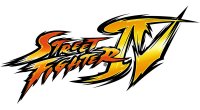Fighting games declined rapidly in the early 2000's and their glory faded from the collective consciousness, perhaps undeservedly for a genre competitive from day one and older than traditional established "eSports".
With no arcades, predominantly 2D graphics, troubling netcode and a sluggish 3D transition, their art barely shined through most of this decade. And when it did, many gamers didn't recognize the outlandish setting and reactions fell along these lines "What game is this?", "There was a Street Fighter 3?".
However the flame kept burning, mainly fueled by Japan (and Asia through extension),
(in no specific order).
Now, shortly arrived in 2009, Street Fighter4 comes along with a home console release (and eventually PC) resurrecting the genre it's synonymous with. SF4 attracts (mostly deserved)
becoming a commercial success and the "new thing" to play.
The scene boomed with hordes of new players (leeched from other fighting games, veterans coming out of retirement, as well as new talent: nostalgic gamers or just plain 09ers), all of them dropping on top of the already established scene (caught somewhat by surprise).
Competitive Street Fighter4 could only benefit from this reception and the amount of activity throughout the year was impressive.
This was reflected in massive tournament turnouts for fighting games events, arguably peaking with
participating over 2 days at Evo 2009 in July. "Arguably" because tournaments like Gamestop Nationals or SBO 2009 branched in 3 countries with many qualifier rounds before the main event.
In turn, this competitive drive attracted massive interest from spectators. The live stream for
(produced by the familiar faces of djWHEAT & LO3 Crew) accounted a total of 160,000 viewers over 2 days, paving the way for Evo 2009, whos live stream audience peaked at over 23,000 viewers at one moment. Also match videos uploaded on YouTube gathered
of thousands views. Many other fighting games gained traction from their exposure next to Street Fighter4, thus growing the overall scene.
All this newly sparked interest could only be satisfied and maintained by gradually more intensive coverage. The fighting games community was paradoxically reluctant to do live streams in the beginning (probably not realizing the growth of their audience) and other forms of coverage was lacking or hidden in SRK forums.
However passionate people (empowered by copious amounts of whining) started to make things happen and coverage improved radically. The second half of the year had live streams every weekend (sometimes overlapping) making it feel indeed like a season of something established you'd follow on TV.
Sinsation (February 7-8)
attendance: ~80 players, videos:
here
1. Gootecks (Balrog)
2. Joe "ILOVEU" Ciaramelli (Sagat)
3. Justin Wong (Guile, Rufus, Akuma, Chun)
4. Andre Lambert (Bison)
Final Round XII (March 13-15)
attendance: 256 players
1. Justin Wong (Rufus)
2. Gootecks (Boxer)
3. Joe "ILOVEU" Ciaramelli (Sagat)
4. Marn (Boxer, Rufus)
Gamestop Nationals Finals
-
Japan (January 18)
attendance: 128 players, videos:
here
1. Iyo (Dhalsim)
2. RF (Sagat)
3. Kindevu (Rufus)
4. Riki (M.Bison)
-
Korea (March 21)
videos:
1,
2
1. Poongko (Ryu, Seth)
2. Janet (Balrog)
3. Laugh (Ryu, Chun Li)
4. Spider Tao (M.Bison)
-
US & World Finals (April 18)
coverage:
here, videos:
here
1. Justin Wong (Rufus)
2. Mike Ross (E.Honda)
3-4. Jason Cole (Balrog)
3-4. Antwan Ortiz (Balrog)
1. Daigo Umehara (Ryu)
2. Justin Wong (Rufus)
3. Iyo (Dhalsim)
4. Poongko (Ryu)
WCG Fighter Club (April 26-27)
attendance: 256 players, official website:
here, full results:
here, videos:
here
1. Justin Wong (Rufus, Abel)
2. Arturo Sanchez (Dhalsim, Seth)
3. Nestor Corchado (Sagat)
4. Joe "ILOVEU" Ciaramelli (Sagat)
SBO Qualifiers @ Stunfest 09 (May 9-10, France)
1. Marn (Rufus, USA) & Justin Wong (Balrog, USA) <- taking Europe's spot for SBO 2009
2. RickyTTT (Ryu, Spain) & HellTPM (M.Bison, Spain)
3. Ryan Hart (Ken, UK) & Zak Bennett (Sagat, UK)
SBO Qualifiers @ Denjin arcade (June 6)
full results:
here, videos:
here
1. Combofiend (C.Viper) & Alex Valle (Ryu)
2. Ed Ma (Akuma) & Ken-I (Rufus)
3. Joe "ILOVEU" Ciaramelli (Sagat) & Arturo Sanchez (Dhalsim)
4. Moval (Blanka) & SoMuchDamage (Sagat)
Devastation 2009 (June 19-21)
attendance: 133 players, official website:
here, videos:
here
1. Justin Wong (Rufus, Abel)
2. John Choi (Ryu)
3. Ed Ma (Akuma)
4. Ken I (Rufus)
Evo 2009 (July 17-18)
attendance:
1024 players, official website:
here, full results:
here, videos:
IGN.com (needs subscription),
here (matches not covered by IGN)
1. Daigo Umehara (Ryu)
2. Justin Wong (Rufus, Abel, Balrog)
3. Ed Ma (Akuma)
4. Sanford Kelly (Akuma, Cammy)
Gods Garden Invitational (August 7, Japan)
videos:
here
1. Mago (Sagat)
2. Uryo (Viper)
3. Daigo Umehara (Ryu)
4. Akimo (E.Honda)
Shiozawa Cup 5vs5 (August 13, Japan)
attendance: 46 teams (230 players), videos:
here
1. Team Neko Punch: Nyan (Ryu), Misse (Akuma), Bonchan (Sagat), Iyo (Dhalsim), Daigo (Ryu)
2. Team VF High Motivation: Koedo (Sagat), Sutoraikun (Ken), Fuu (Ryu), Yoruno Teramachi (Sagat), Itabashi Zangief (Zangief)
3. Team Sakamoto Shosa: Mahoshojo Zangitan (Zangief), FAX Gimoto (Blanka), Darui (Dhalsim), Yuru (Ryu), Sakamoto Shosa (Sagat)
Tougeki / Super Battle Opera 2009 2vs2 (August 14-16, Japan)
attendance: 32 teams, 64 players, official website:
here, full results & coverage:
here, videos:
here or
here (with French commentary by Puyo)
1. Gosho (Rufus) & Kyabetsu (C.Viper)
2. Iyo (Dhalsim) & Shiro (Abel)
3. Mago (Sagat) & Nemo (Chun Li)
4. Umeso (E.Honda) & Dashio (C.Viper)
West Coast Warzone (September 4-6)
full results:
here, videos:
here
1. Marn (Rufus, C.Viper)
2. Alex Valle (Ryu)
3. Ed Ma (Akuma)
4. Yeb (Gen)
Super VS Battle 2009 (September 11-13, UK)
attendance: 108 players, official website:
here
1. RickyTTT (Sagat, Spain)
2. Shirl (Akuma, Italy)
3. Ryan Hart (Sagat, UK)
4. Zak Bennett (Balrog, UK)
Bar Fights 2 (October 11)
official website:
here, videos:
here
East Coast (Justin Wong, Arturo Sanchez, Marn, Sanford Kelly, "Joe ILOVEU") vs
West Coast (Mike Ross, Ed Ma, Alex Valle, Combofiend, Ken I)
5-0 (1st set),
5-1 (2nd set)
Seasons Beatings 4 (October 16-18)
attendance: 300 players, full results & coverage:
here, videos:
here
Singles
1. Daigo Umehara (Ryu)
2. Justin Wong (Rufus, Fei Long)
3. Joe "ILOVEU" Ciaramelli (Sagat)
4. Ari "Floe" Weintraub (Sagat)
Teams 5vs5
1. Team Best Friends Forever: Justin Wong (Rufus), Joe "ILOVEU" Ciaramelli (Sagat) and Noel Brown (Zangief).
2. Team WTF: Sanford "Santhrax" Kelly (Cammy), Ari "Floe" Weintraub (Sagat) and Vegita-X (Zangief).
3. Team Daigo: Daigo Umehara (Ryu), Larry (Zangief) and Moses (Rufus).
4. Team Puerto Rico: Jose "Frodo" Llera (Ryu), Ryan "Fubarduck" Harvey (Akuma), Eduardo "Vvv scrub" Perez-frangie (Balrog).
Active Gamers: Triple Threat (November 14)
full results:
here, videos:
here
1. Marn (C. Viper)
2. Justin Wong (Rufus)
3. Ari "fLoE" Weintraub (Sagat)
4. Alex Valle (Ryu)
NorCal Regionals 2009 (November 21-22)
official website:
here, full results & coverage:
here
1. Ricky Ortiz (Rufus)
2. Alex Valle (Ryu)
3. Peter "Combofiend" Rosas (Abel)
4. Hsien Chang (Akuma)
DreamHack Winter 2009 (November 26-27, Sweden)
attendance: ~100 players, official website:
here, videos: partially
here
1. Ryan Hart (Sagat, UK)
2. Xian (Dhalsim, Singapore)
3. Yagami (Dhalsim, Sweden)
4. Zak Bennet (Akuma, UK)
Korea NStarGame 2009 Season 1 (November)
official website:
here, full results & coverage:
here, videos:
here
1. Poongko (Ryu)
2. RealRaiz (Rufus)
3. Laugh (Ryu)
4. M.Lizard (C.Viper)
NEC X (December 5-6)
attendance: ~250 players, videos:
singles,
teams
Singles
1. Justin Wong (Rufus)
2. Flash Metroid (C.Viper)
3. Sanford Kelly (Akuma, Cammy)
4. Joe "ILOVEU" Ciaramelli (Sagat)
Teams 3vs3
1. Justin Wong, Noel, Perfect Sin
2. Eduardo Perez, Marn, Flash Metroid
3. Sanford Kelly, Andre Lambert, Evil Rahsaan
WCG USA Holiday Heroes (December 12-13)
attendance: 128 players, official website:
here
1. Joe "ILOVEU" Ciaramelli (Sagat)
2. Arturo Sanchez (Seth, Dhalsim)
3. Kevin "Dieminion" Landon (Guile, E.Honda)
4. Phillip "KDZ" Atkinson (Rufus)


